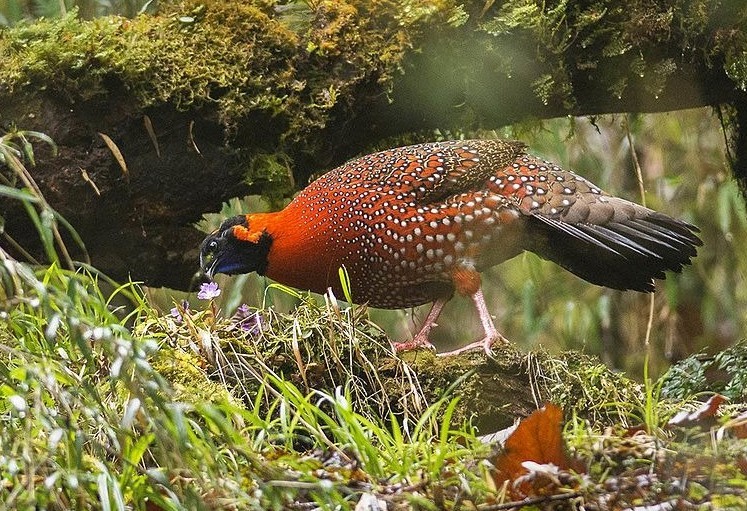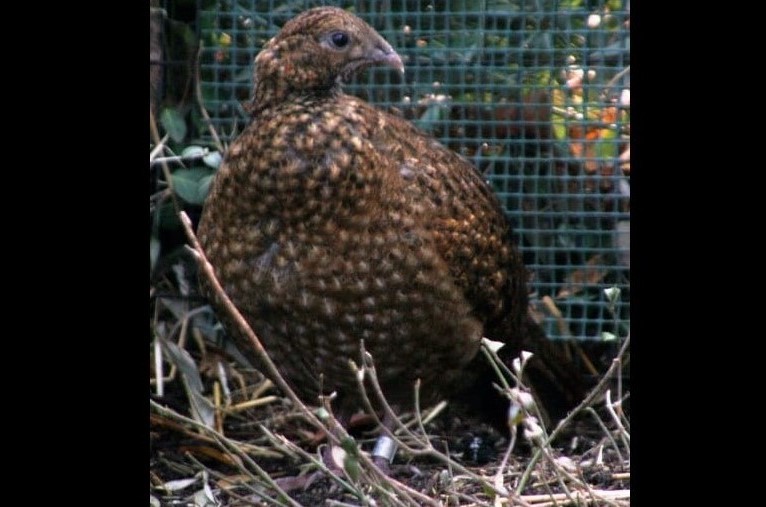Locally called ‘Munal’, the Satyr Tragopan was first reported to be seen by Hickell in 1842, between the present Kurseong and Sonada region of the Darjeeling district.

Kolkata: The scientists of the Zoological Survey of India (ZSI) have rediscovered Satyr Tragopan or the crimson horned pheasant in the Senchal Wildlife Sanctuary in the Darjeeling district of West Bengal after 170 years, said ZSI director Dhriti Banerjee.
Banerjee said the rediscovery of the Satyr Tragopan after such a long period is “encouraging news” and indicates that the forested habitats are well preserved and effectively managed.
In a statement, the Ministry of Environment, Forest and Climate Change said, “The male Satyr Tragopan (Tragopan satyra) is one of the most beautiful birds in India and also one of the rarest and is best seen in Neora Valley National Park of Darjeeling district, though there are few in Singalila National Park also in the same district. Male Satyr’s are 68 cm and are a bright crimson red with white spots. Females are smaller and less conspicuous and brown in colour.”
The statement added that during courtship, the tragopans display horn-like projections and are often called “horned pheasants.” These birds reside in moist oak and rhododendron forests with dense undergrowth and bamboo clumps. They range from 2,400 to 4200 metre in summers and 1,800 metre in winters.

Locally called “Munal”, the Satyr Tragopan was first reported to be seen by Hickell in 1842, between the present Kurseong and Sonada region of the Darjeeling district. In 1863, Jerdon and in 1933 Ingles reported the presence of the bird near Darjeeling at 7,000-8,000 feet and the present Singalila National Park. Like other Tragopans, the Satyr is faced with habitat destruction and hunting pressure and is now considered to be near-threatened.
Banerjee also said, “The Protected Area is the house of a good number of melanistic (black) forms of Barking Deer and Common Leopard. According to her, the North Bengal region of West Bengal is rich in faunal diversity because of high-quality habitats and protection by the forest department. Apart from Singalila National Park, this small Protected Area — Senchal Wildlife Sanctuary — is home to some of the top conservation priority species. She was proud to state that the long-term study by ZSI scientists funded by the National Mission on Himalayan Studies has resulted in the documentation of 17 large and medium-sized mammals from the sanctuary.”
The statement added, “A camera trap study conducted in the sanctuary between 2018-2020, revealed the presence of 17 species of such medium and large mammals. Of these animals, three have been categorised as vulnerable (Asiatic black bear, common leopard, mainland serow) and three as near threatened (golden cat, marbled Cat, black giant squirrel) by International Union for Conservation of Nature (IUCN). Barking deer yielded the most number of camera captures followed by wild boar, large Indian civet, mainland serow, leopard cat, common leopard, Malayan porcupine etc. In addition to these, an abundance of melanistic morphs of two species were captured from the sanctuary, melanistic barking deer (12 camera captures) and melanistic leopard (14 camera captures).”
